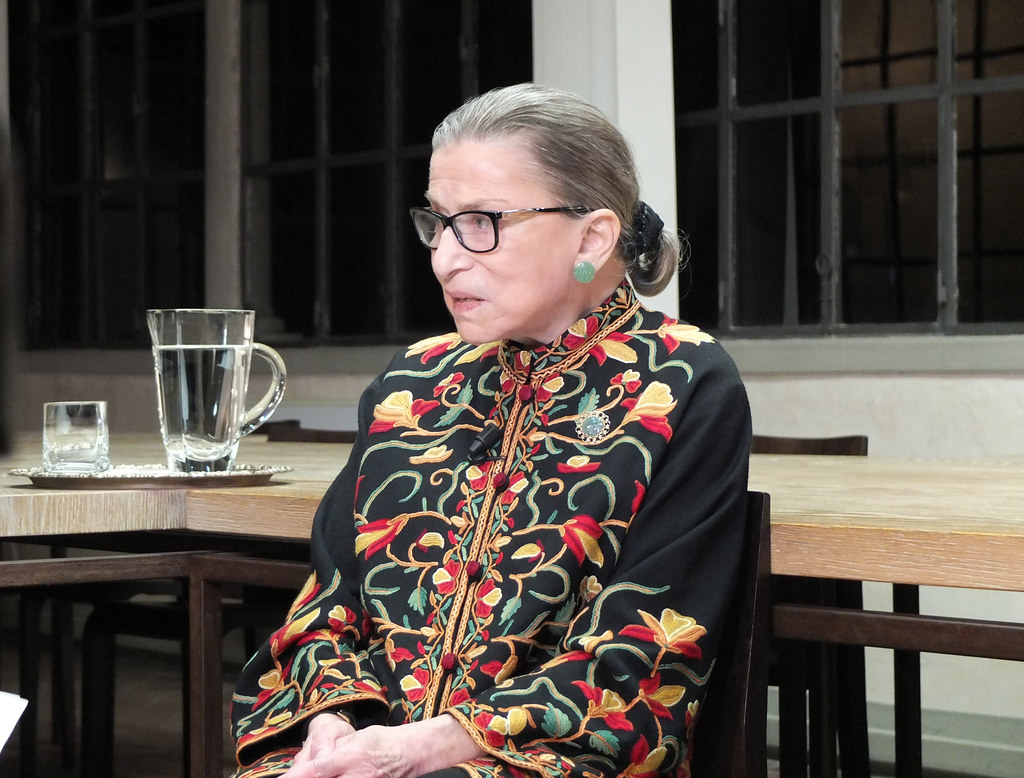Why ‘herd immunity’ is a distraction

There has been a spectrum of actions taken by governments to address near-term prevention of the spread of COVID-19. The extremes have ranged from total lockdowns (e.g., Italy, Belgium and Spain); to legal enforcement of quarantines and contact tracing (e.g., Canada and Germany); to much lighter forms of restriction (e.g., Denmark and Norway); to even more minimal restrictions, but with extensive testing and tracing (e.g., Taiwan and South Korea).
There have also been some clearly incompetent policies, notably in the United States, where the country’s public health infrastructure has been eviscerated not just by Trump, but also through decades of adherence to a for-profit health care system in which the bottom line has been prioritized over optimal health outcomes.
On the whole, the shape of the epidemiological curves has been broadly similar, no matter which policy options were selected (although fatality rates varied considerably). Those who initiated stringent lockdowns did so on the strategy that a severe lockdown was required until better scientific understanding, new technologies and medical treatments could be developed (as well as providing breathing space to ensure that their respective health care systems weren’t overwhelmed). But they have also experienced among the greatest economic damage in terms of GDP growth (e.g., Italy, Spain and France), even when generous support measures to offset the impact of the lockdowns were implemented.
By contrast, the governments that initiated border closures quickly (e.g., South Korea, Taiwan, New Zealand and Australia) and combined these with robust contact tracing policies were best able to limit the spread of the virus in its first phase and minimize fatalities. Those countries have attained a kind of international esteem for these results, which are held up as a justification for the idea that policy failures were not inevitable, even if we did not fully understand the underlying pandemic early on.
One example is the effective response to COVID-19 by Taiwan using lessons learned from the previous epidemic of SARS. Policies adopted by countries such as Thailand, Vietnam and South Korea have also been held up as hallmarks to be emulated.
Then there have been countries have been collectively labeled the “herd immunity” countries, which is highly misleading, as it combines countries with an incompetent and inept response, notably the United States and the United Kingdom, with those were more successful, such as the aforementioned South Korea and Taiwan, along with at least one country that does not deserve to be placed in this category, namely Sweden.
Sweden has been unfairly painted with this broad brush for its failures, even as some of its European neighbors have started to question whether they themselves went too far in terms of restrictions (notably Germany, Switzerland, and Norway). It has been caricatured as some sort of libertarian paradise devoid of any kind of restrictions, where politicians have recklessly played with human lives in pursuit of some grand scientific field study.
In reality, Sweden did introduce restrictions but eschewed many of the more severe measures adopted by their European counterparts, with a longer-term view of what constitutes a successful outcome. However, instead of furnishing careful consideration of Sweden’s particulars and nuances, much of the media still continues to characterize the country’s approach as a “cautionary tale,” as the headline of a July article by New York Times European economics correspondent Peter S. Goodman puts it. But the reality is different: Sweden’s many successes in curbing coronavirus have been overshadowed by its one spectacular failure: namely, protecting the elderly.
Goodman’s assessment of Sweden’s approach as “an unorthodox, open-air experiment” is not alone; the headline of a Washington Post article by Professor Gina Gustavsson in May termed it an experiment in “blind patriotism.”
According to a more recent report in the Washington Post by Yasmeen Abutaleb and Josh Dawsey, one of Donald Trump’s chief health advisers, Scott Atlas, “is urging the White House to embrace a controversial ‘herd immunity’ strategy to combat the pandemic, which would entail allowing the coronavirus to spread through most of the population to quickly build resistance to the virus.” The article goes on to suggest that Dr Atlas is advocating an embrace of the so-called “Swedish model.”
Although the Washington Post issued a correction to Abutaleb and Dawsey’s article about a mischaracterization of the Swedish model (the correction stated, “While Sweden did not impose lockdown orders or close most schools and businesses, it did recommend social distancing measures and wearing masks”), it is still an oversimplification: Anders Tegnell, Sweden’s current state epidemiologist, went out of his way to counter the notion that herd immunity per se “formed the central thrust of Sweden’s containment plan,” in an April interview with USA Today (even though in July he acknowledged that herd immunity is a long-term, albeit elusive, goal).
But the focus on herd immunity obscures the restrictions that the Swedish authorities did introduce. Sweden’s emergency measures consisted mainly of Public Health Agency recommendations for social distancing, working at home, school closings, border controls, internal travel restrictions and self-quarantining—some of which proved surprisingly effective due to the fact that a little more than half of all homes in Sweden are one-resident households (the highest proportion in Europe, according to Eurostat), which in turn facilitated high citizen compliance with working from home. “At least a third of Stockholmers are remote working, while Stockholm Business Region, funded by the city council, estimates that levels are well above 90% in the capital’s largest companies,” according to BBC Worklife.
Bans on public gatherings of more than 500 people—by the end of March reduced to 50—were mandated, not just recommended. Testing was limited to priority cases. And despite having “one of the lowest number[s] of intensive care beds in Europe per capita[, Sweden] manage[d] to double it amid a global health crisis,” according to the Local, a Swedish news publication. Consequently, ICUs never came close to reaching peak capacity.
Moreover, in adopting less severe restrictions, Sweden’s economy has likely mitigated the severe economic fallout of other countries that adopted more stringent lockdowns. Whereas Italy’s GDP is forecast by the IMF to contract by almost 13 percent this year, in Sweden the comparable figure is a 6.8 percent contraction, considerably better than many other European economies and roughly in line with other Scandinavian countries (despite being a small, open economy much more affected by the vagaries of global economic growth than a larger more self-contained economy such as the U.S.). Sweden’s less severe approach also has likely mitigated the problem of “hysteresis” experienced in other countries where, by virtue of the lengthy economy-wide shutdowns/restrictions, short-term problems have morphed into longer-term ones, notably in the area of unemployment (because many jobs are unlikely to return at all).
Finally, the middling approach to restrictions has also meant that Sweden has avoided many of the challenges now being experienced in countries such as the UK. As Spiked columnist Tim Black recently observed, “Having allowed and fostered the reorganisation of society around the principle of safety,” the Conservative administration of Boris Johnson now finds itself “vulnerable to attack and revision” as the government moved to consider other policies beyond absolute safety in its efforts to normalize the economy. The resultant trade-off is particularly noticeable in the politically fraught area of school reopenings (a problem Sweden didn’t experience as it has kept schools “open since COVID-19 emerged, without any major adjustments to class size, lunch policies, or recess rules”).
Which is not to say that Sweden’s approach was free of problems: In Sweden’s case, much like the United States, there was a paucity of preventative measures taken for protecting the elderly, especially in nursing homes, and they proved to be the leading component of the death count. According to political scientist Lisa Pelling, head of research at the Stockholm-based think tank Arena Idé, “90 per cent of those who have so far died from COVID-19 in Sweden were over 70 years old.”
Sweden was hardly unique in that regard: In fact, “95% of COVID-19 fatalities on the continent [of Europe] have been people older than 60. Additionally, more than 50% of all deaths in Europe were people aged 80 or older,” according to Dr. Hans Kluge, the regional director of WHO Europe. However, in regard to Sweden particularly, Lisa Pelling ascribes the high fatality rate among the elderly to longstanding country-specific problems that Sweden could and should have addressed. These include “the lack of personal protective equipment” for nursing home employees and “the fragmented organisation of eldercare in Sweden, where a ‘free choice’ voucher system allows for unlimited profit-making private actors to compete for clients.”
Ironically, the elderly care fiasco was a direct consequence of the neoliberal economic “reforms” introduced in the country during the 1990s, which partially dismantled some of Sweden’s historically strong public health care infrastructure in regard to its nursing homes (and echoed the private equity-led “elder abuse” in other countries, notably Canada and the U.S.). Unlike many other governments, however, Sweden’s authorities have acknowledged that the poor shielding of the elderly was a major policy error (by contrast, New York Governor Andrew Cuomo’s reversal of the nursing home directive to take in COVID-19 patients is an implicit acknowledgement of his initial policy failure here, even as he steadfastly refuses to acknowledge it as such, yet still reaps considerable praise from the U.S. mainstream media).
As for herd immunity itself (the more problematic aspect of Sweden’s strategy), it is, as Dr. James Hamblin of the Atlantic argues, “an important public-health concept, developed and used to guide vaccination policy,” which has historically been used for the purposes of vaccination policy to calculate the number of people who need to be vaccinated in order to ensure the safety of the population. But it is useless today because, as Hamblin concludes, it “offers little such guidance during an ongoing pandemic without a vaccine.”
Originally, herd immunity was based on some relatively narrowly based linear differential formulae developed in a famous 1927 paper—by mathematicians, W.O. Kermack and A.G. McKendrick—to allegedly describe the spread of infectious diseases. These equations have since been greatly elaborated with extra parameters, none of which can be reliably estimated, but which can (and have been) manipulated to produce terrifying predictions. The underlying assumption is the data-free notion that immunity to a virus is binary, i.e., you’re either immune or not immune—and non-immune people can only become immune after being infected (if they don’t die). In other words, the hypothesized “herd immunity” percentage is model-defined as the immune population’s percentage when the virus starts running out of non-immune people to infect.
This line of reasoning falls apart when you consider a) it’s impossible to measure or estimate the number of non-immune and immune people in any country with anything approaching usable accuracy (both for past epidemics and doubly so for ongoing epidemics given the challenges posed by testing); and b) essentially no documented epidemics have shown the slightest evidence of reaching the 40 percent to 70 percent immunity required by the differential equation models.
To deal with this problem, later variations of the Kermack-McKendrick introduced a parameter that allowed a sizable (and unmeasurable) percentage of the population to be unsusceptible before the epidemic strikes. That allows the modeler to dial up a predicted herd immunity percentage anywhere between 1 percent and 70 percent—and also begs the all-important question: How did all those unsusceptible people become immune well before any outbreak of the epidemic?
To cope with that challenge, researchers have in recent years begun to posit the concept of “heterogeneity.”
Heterogeneity conveys the idea that immunity is multivalent, not binary—in other words, some portion of infected people will never be infected, some will show no symptoms, some will show mild ones, some will be sick enough to go to the hospital and some will die. Conceptually, that is certainly closer to reality.
But even with this concession, there is a problem: admitting immune multivalency renders the whole concept of herd immunity problematic as a pandemic prevention strategy. Is herd immunity the herd that can’t possibly get infected, or the herd that can suffer no worse than mild symptoms, or the herd that goes to the hospital but can’t die? Also problematic are questions related to infectiousness of people in each of the multivalent immune categories, which researchers are now seeking to answer. Nor do we know whether herd immunity always confers complete immunity, or merely immunity to outcomes worse than mild. And we still don’t know how long the body’s immune response will last. How does one start constructing a sensible public health response based on such ambiguities?
These problems become further pronounced when one examines the complex interaction between B-cells (which make the antibodies that neutralize the microbes, thereby rendering them harmless) and T-cells, “which can ‘remember’ past infections and kill pathogens if they reappear,” write Clive Cookson, Anna Gross and Ian Bott in the Financial Times. Researchers such as Dr Monica Gandhi suggest that the interplay between these groups of cells is what establishes the body’s immune response. However, “The immune system is basically a memory machine,” according to Alessandro Sette, a professor and member of La Jolla Institute’s Infectious Disease and Vaccine Center. And all of us have different experiences with viruses and other kinds of diseases. Hence, by definition, our respective “immune memory machine[s]” will not be identical.
Furthermore, the degree of a disease’s initial infectiousness per se might not be the best signpost in determining future immune responses, as Dr Sette’s colleague Daniela Weiskopf observed: “in some people, pre-existing T cell memory against common cold coronaviruses can cross-recognize SARS-CoV-2, down to the exact molecular structures. … This could help explain why some people show milder symptoms of disease while others get severely sick.” This means that although the common cold is a type of coronavirus, people’s immune responses to the common cold don’t help to pinpoint in advance the kinds of immune responses any given person might have when infected with SARS-CoV-2. Over the course of a lifetime, just about everyone has caught a common cold, but their immune systems do not automatically cross-recognize COVID-19.
All of which points to the futility of asking the question: When do we reach herd immunity? Essentially, we need to understand that mass immunity is not a matter of totalities; rather, it is a continuum that stretches from “can’t ever be infected” to “won’t be hospitalized or will die if infected.” That plain English is consistent with recent epidemiological insights and evidence that may well bear far greater fruit than political modeling, e.g., the continuum of viral immunity can be greatly enhanced—or suppressed—by a person’s history of prior viral exposures all the way back to the womb; likewise, the ultimate outcome if one catches the virus can vary significantly depending on other pre-existing health conditions, such as nutritional status, comorbidities and smoking history.
Unfortunately, much like the climate change debate, responses to COVID-19 have become highly politicized, which partly explains why we have the anomalous sight of libertarian Senator Rand Paul making hagiographic—and highly misleading—references to social democratic Sweden. As the executive editor of UnHerd, Freddie Sayers, has noted, “Sweden is not a libertarian society—far from it; in reality, they are sticklers for the rules.” But Sayers goes on to note that, excluding the elderly care tragedy, Sweden’s public health infrastructure has effectively institutionalized the country’s broader social cohesion, especially its consensus in regard to health care provision. Sayers contrasts Sweden’s communitarianism to the “fragmented and highly individualistic culture of the UK and US” (which helps to explain why it is not feasible to mindlessly adopt the Swedish model lock, stock, and barrel into the U.S.).
The question of what else Sweden did is worth some study and will be lost if it is simplistically caricatured as herd immunity. There is no question that the country did induce changes in behavior on hygiene and social distancing and introduced some other modified forms of restriction. But these moderate restrictions should be viewed as a social contract between the government of Sweden and its citizens. In effect, they represented a compromise to avoid the more extreme heavy-handed responses adopted in other countries. For that moderation, the country has been unfairly maligned.
Attacking the myths that governed its policy is a start, as is the recognition that future responses may need to be reassessed in light of what we have learned in regard to treating COVID-19. We can’t simply rely on rolling lockdowns or the panacea of a vaccine; a better balance needs to be found. As other countries come to examine their respective policy responses, Sweden, for all of its mistakes, ought to be viewed in a fairer light.
*This article was produced by Economy for All, a project of the Independent Media Institute.



